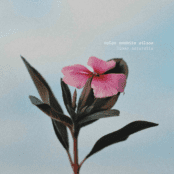[dropcap style=”font-size:100px; color:#992211;”]I[/dropcap] was excited after a Wod gig in North Wootton when Mike York played me some Turkish sipsi music.
The sipsi is a small reedpipe, played using circular breathing, with a wild and thrilling sound. I was immediately captivated by the lumpy nine-time rhythms and mind-boggling technique.
On its own the sipsi can sound a bit naked, which is why it is usually accompanied by other instruments, but this got me thinking about the evolution of the bagpipe. Reedpipes are found all across Europe and the near East, from the Welsh pibgorn to the Rajasthan pungi, and though known in Antiquity are probably much older.
One solution to the thinness of the sound is to play two pipes together. The slight discrepancies in tuning create a chorus effect that is a bit unnerving.
The other possibility is to add a drone pipe, one that plays a constant note and which grounds the melodies and improvisations. The instrument now has its own accompaniment.
While blowing gives you greater control, and means you can gain extra notes in the upper register or use the tongue to produce articulation, it’s not very pleasant having two long reeds in your mouth. I wonder who the genius was who, looking at the animal skins used for carrying water and wine, realised they could be used with the reedpipe to create the necessary reservoir of air.
This is not the instrument of Apollo, but of Marsyas the satyr. It’s for making us dance, inspiring us to ecstacy with repetitive rhythms, percussive melodies and wonky temperaments.
All these pipes use a single reed, and single-reed pipes are still found in Eastern Europe, North Africa, the Middle East, Sweden and Wales.
But the final development was the double-reed and the discovery of how to drill out conically-bored chanters. This was probably an Arab innovation.
Thus it was that the double-reeded bagpipe, as we know it in the West, spread up through Western Europe in the Middle Ages, perhaps from Islamic Spain or brought back with crusaders.
It’s the kind I play. I love the instrument’s ancientness. It’s part of the pleasure it brings.
Reeds photo: FreeDigitalPhotos.net/domdeen
A writer and a folk musician, Andy is the author of ‘Shroom: A Cultural History of the Magic Mushroom’ and has published a range of articles and academic papers on subjects as diverse as psychedelics, paganism, bardism, environmental protest, fairies, shamanism and evolution. A modern day troubadour, he plays mandolin, writes songs, and fronts darkly crafted folk band, Telling the Bees. A leading exponent of the English Bagpipes, he plays for brythonic dancing in a trio called Wod.





















